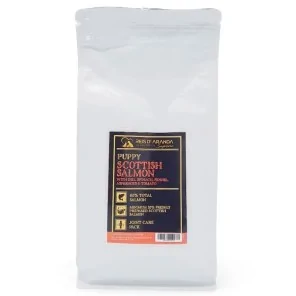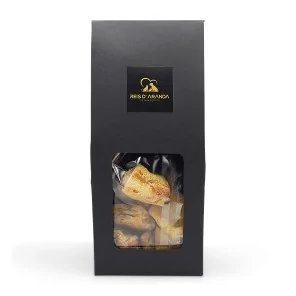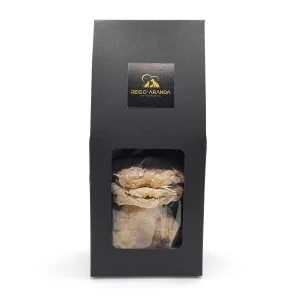Its name says it all: the Vienna blue rabbit comes from Austria. Not only is it beautiful with its shiny blue-grey...
EXOTIC COLOURS ON DOGS
INTRODUCTION
We all know that fashions are a double-edged sword and animals have always been one of the jewels in the crown of fashions. When a particular breed or type of animal becomes fashionable among the population, it can cause a breed that has almost disappeared to gain enough strength to get ahead but, at the same time, it causes many undesirables to take advantage of people's illusion to breed animals in bad conditions, to sell quickly and generate high incomes without worrying about the animal's health, its physical or psychological needs or respecting the standard at all.
In this case we will talk about the fashion for exotic colours in dogs, which has led to the introduction of undesirable crossbreeding and colour patterns that often lead to serious health problems.
THE NEW CRAZE FOR EXOTIC COLOURS
A few years ago a wide variety of colours such as blue, merle, isabelline, liver, silver and lilac became fashionable. In many breeds these colours (and many others) are completely natural but there are breeds such as the Yorkshire Terrier, Labrador Retriever, French Bulldog, English Bulldog or Poodle that have specific colours in their standard.
Exotically coloured dogs whose colours are not in the breed's history books (as in the poodle, which has more types of natural patterns and colourings than the FCI accepts) or in the breed standard are NOT purebred dogs. No serious breeder who loves and respects the breed on his hands is going to breed such colours or applaud them.
The breeds most likely to show exotic colourings are the Yorkshire Terrier, the English Bulldog and the French Bulldog.
Some exotic colours in dog breeds are:
- YORKSHIRE TERRIER: Solid Black, Golddust, Albino, White, Chocolate, Chocolate, Sable, Particolours, Tricolours, Solid Blue, Merle and any combination of these.
- DOBERMANN: Blue, Albino and Elizabethan (these colours are natural in the Dobermann but carry serious health problems).
- LABRADOR RETRIEVER: Silver (born of a crossbreeding with the Braco de Weimar).
- ENGLISH AND FRENCH BULLDOG : Chocolate, Tan Group (tan markings), Tricolour, Lilac, Blue, Merle (any), Trinos (brindle with tan markings), Solid Black and any combination of these colours.
- BÓXER: White (this is a natural colour and is defended by several breeders who are fighting for it to be recognised by the FCI, having to be tested for deafness).
- DALMATA: Lemon (this is a natural but extremely undesirable colour which is controlled by means of genetic colour tests).
CONSEQUENCES OF EXOTIC COLOURS
The health problems associated with breeding incorrectly we know but there are evils that are linked to the colours and that must be controlled with a respectful and studied breeding, when a fashion arises everyone wants a particular colour or pattern (like the merle, which is immensely popular) the undesirable breed without regard or caring about these same health problems, they only look for money and the main affected are the dogs and then those same ones (the majority) based on their ignorance are faced with more expenses or even the loss of their dog.
What health problems can these colours cause? We will talk about the five most important ones:
- BLUE AND LILAC: Blue and lilac are diluted colours. The first (blue) comes from black and the second (lilac) comes from a mixture of blue and chocolate. Blue and lilac dogs are not only less able to retain heat in appearance, but can often suffer from alopecia and skin problems.
- ISABELINO: This colour occurs in the Dobermann and is the dilute chocolate tan pattern, these dogs are much more prone to sunburn, skin lumps (warts) and premature ageing. It is a colour which occurs naturally in the breed as well as the blue but which should not be bred on purpose, specimens of these colours should only be used for companionship and should be neutered when they reach the appropriate age.
- ALBINISM: Albinism (as we talked about in another article) is a completely natural and recessive gene that in small pets (rabbits, guinea pigs...) does not cause any health problems, but in the case of dogs it causes many problems that we can also observe in humans, such as blindness or deafness.
- MERLE: The merle pattern also has its own article but although it is a natural gene in many breeds (in others it is the result of crossbreeding) and very popular, it must be handled with care, as the union of two merle dogs will give rise to double merle dogs that will be blind, deaf or deafblind (as well as with malformations such as microphthalmia).
THE STANDARD: THE GUIDE TO THE BREEDS
The standard is the guide that indicates what a perfect specimen of a certain breed should be like, it speaks of its origin, its physical characteristics, its psychological characteristics in many cases or tells us about those things that are penalisable or totally undesirable (specific eye colour, shape of the legs, aggressive or fearful personality...).
It is the official breed clubs that dictate how they should be and that is what breeders should be guided by, a good breeder will never get carried away by fashions or by those things that the judges "like" more, but will do the right thing and breed animals adjusted to the standard of their breed; no dog is perfect, of course, but they try to be as close as possible to that perfection without influencing their health in the wrong way.
There are colours like in the poodle that are not recognised in the standard nowadays in spite of being completely natural colours (like the brindle) or in the boxer (the white), this kind of original colours in those animals but not recognised are not bad at all, but there are genes or colours that have never existed in that breed (like the merle gene in the English or French bulldog).
When we are looking for a pet breed it is always beneficial to read the standard even if our pet is only intended for companionship, not only will we learn about our pet but it will also help us to prevent cheating and scams.
CONCLUSION
Fashions can save a certain breed from extinction but at the same time it opens the door for more than one undesirable person to take advantage of these same fashions to make money. Exotic colours that are not naturally implanted in the breed (reflected in its historical records) are terrible for the breeds and only indicate that there is an intentional miscegenation (with no basis other than to make money out of people).
Leave a comment
Log in to post comments
















